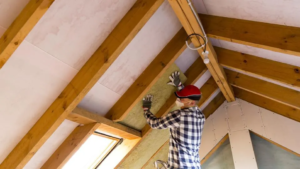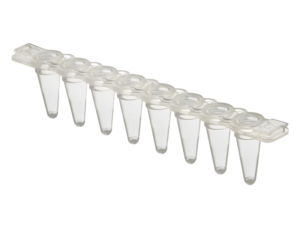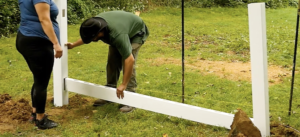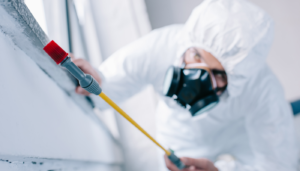A driveway or patio that sinks or cracks is not only unsightly but also a safety hazard. Repeatedly driving over sunken concrete can damage your vehicle and cause premature wear on its components.

Concrete leveling lifts uneven or sunk concrete surfaces, returning them to their original position and enhancing safety, functionality, and aesthetics.
Mudjacking, also known as concrete lifting or pressure grouting is an economical and effective way to level sunken concrete slabs such as patios, walkways, driveways, pool decks, steps and more. This method is much less expensive than replacing the entire slab and is more environmentally friendly. Uneven concrete surfaces are not only an eye sore but can also be a liability if they pose tripping hazards or cause damage to vehicles and other property. By repairing them promptly, you can avoid safety issues and minimize potential for costly repairs.
Mudjacking works by pumping a mixture of sand, cement and other materials through holes drilled into the slab, creating a slurry that lifts it back into place. This method is ideal for concrete that is in relatively good condition but has simply sunk over time due to poor soil conditions or settling.
This process can be completed fairly quickly and is relatively inexpensive. However, it is not a permanent solution and may require further repair or replacement in the future. It is also not suitable for areas that receive a lot of water as the slurry used in mudjacking is not water proof.
A newer technology that offers significant advantages over mudjacking is poly leveling, also called foam injection. It works in a similar manner to mudjacking but uses lightweight polyurethane instead of natural materials. When injected into the concrete, the foam expands to fill the void and raise the damaged slab. This technique is more precise than mudjacking and can be completed much faster, making it an excellent choice for tight project timelines.
It is important to work with an experienced concrete contractor to determine which concrete leveling method is best suited for your unique situation. The benefits of working with an expert include the ability to provide insights into which option will offer the most cost-effective and durable results. They can also help you weigh the pros and cons of each method so that you can make an informed decision that aligns with your project goals and priorities.
Polyurethane Foam Injection
If you’re a homeowner or commercial property owner, uneven or sunken concrete is a serious problem that may require specialized repair techniques to stabilize the area and restore its functionality. While older methods like mudjacking may have once been the go-to options, an innovative alternative known as polyurethane foam injection (or “poly jacking”) is rapidly becoming the preferred solution for many industry experts.
Unlike the slurry used in traditional mudjacking, the polyurethane foam mixture that’s injected through small ports beneath the affected slab is lighter and therefore less likely to compress and settle the soil underneath. This minimizes the risk of future sinking and damage to your home or business’s foundation, as well as reduces the overall cost and time of the repair process.
Once the polyurethane foam has been injected and cured, the drill holes are patched to make the repaired area look as good as new. This means that the appearance of the concrete surface will be preserved, and your daily routine can continue without disruption.
The polyurethane foam used in this method starts as a liquid and expands rapidly when it comes into contact with air, much like shaving cream or the hard styrofoam that’s often used to protect electronics during shipping. This expansion also helps lift the concrete, as it’s able to fill in any gaps or cracks underneath the surface.
This quick and easy process is a great option for homeowners or commercial property owners who want to fix their concrete problems with minimal invasion and hassle. In fact, a typical project can be completed in less than a day!
If you’re ready to find out more about how this groundbreaking concrete leveling technique can help you, give us a call! We’d be happy to explain the benefits of polyurethane foam and why it is such an effective alternative to traditional methods like mudjacking. Whether you need help lifting a sunken driveway or stabilizing an industrial floor, we have the tools and expertise needed to get the job done right. Contact us today to schedule a consultation!
Stone Slurry Grout
Unlike concrete replacement, which is expensive and time-consuming, concrete leveling is a quick process that allows homeowners and business owners to restore the functionality of their structures. Rather than tearing out the old, damaged concrete and replacing it with new material, concrete leveling uses existing materials in the area to stabilize the slab. It is a more budget-friendly alternative to complete concrete replacement and can be more environmentally friendly, as it reduces the demand for new materials and eliminates waste from demolition.
A number of different methods exist for repairing sunken and uneven concrete, but the most popular option is stone slurry grout. This process combines aspects of both mudjacking and polyurethane foam injection, using a mixture of crushed stones (primarily limestone) with water to fill in gaps and provide additional support. Compared to mudjacking, this method offers more control over the thickness of the mix and is more durable. However, it can still be costly.
Another method for raising and stabilizing sunken concrete is pressure grouting. This is an extremely effective, modern approach that involves injecting a specialized mixture under the sunken concrete. The injected material fills and compacts the soil, lifts the concrete, and provides incredible strength to the structure. This is a great alternative to mudjacking, as it offers the same benefits of lifting sunken concrete but at a lower cost.
In both cases, small holes are drilled into the sunken concrete to allow for the injection of the concrete leveling material. The injected solution is a two-part polymer that is pumped into the ground at a much higher pressure than conventional concrete. The polymer expands when it reaches the weak soil underneath the slab, which causes the underlying dirt to compress and lift the concrete. The concrete is then regraded to the original grade, providing a stable foundation and eliminating any unsafe conditions.
It is important to evaluate the condition of concrete surfaces and seek professional advice when necessary. Uneven surfaces are not only unsightly, but they can create tripping hazards and compromise the structural integrity of a property. The good news is that, regardless of the cause, concrete leveling is a safe and reliable repair that can be completed within hours.
Contact Us
Concrete is a widely used construction material due to its renowned durability. However, it can suffer from the wear and tear of ageing, making it important to identify damage early and address it accordingly. Concrete leveling is a sophisticated repair technique that strategically raises and aligns uneven or sinking concrete surfaces, eliminating trip hazards and elevating both safety and aesthetics.
The cost of a concrete leveling project will vary depending on the size and accessibility of the area, as well as the method chosen (mudjacking or polyurethane foam injection). Additionally, different projects have unique functional requirements, such as those that require additional reinforcement for added strength or those in high-traffic areas, which can increase labor costs.
As a general rule of thumb, the larger the surface being repaired, the higher the cost will be. This is because more materials will be required to cover a larger area, which in turn drives up labor costs.
Whether a project is a residential or commercial space also has an impact on the overall cost, as each type of space requires different equipment and techniques to complete the work effectively. Additionally, a commercial or industrial space will typically have higher labor costs, as these spaces are often more heavily used than domestic ones.
It is vital to partner with a concrete leveling specialist that offers a warranty on their services, as this will help ensure you’re getting an onsite quote that’s accurate and covers any potential issues down the line. Many companies offer a 1-2 year warranty, but others may not offer any at all, which can be problematic should an issue arise after the project is completed.
When it comes to concrete repair, catching problems early and opting for leveling rather than replacement can save you thousands of dollars in the long run. Replacing concrete is a lengthy and costly process, not to mention the fact that it doesn’t resolve the root cause of the damage in question.
Instead, invest in your property and choose a concrete leveling method like PolyRenewal that’s quick, cost-effective, and delivers the durability that you expect from your home improvement investments. Reach out to your local concrete leveling specialists today to schedule a complimentary inspection and a no-commitment quote.




